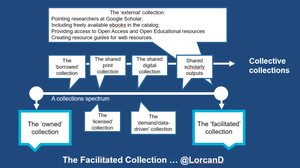There is a fascinating entry by Seb Chan of the Powerhouse Museum in Sydney documenting experiences one month into their participation in the Commons on Flickr. The Powerhouse Museum has been alert to various ways of combining professional and audience metadata in its services. It was an early comer to the Commons, joining the Library of Congress.
Our experiment with the Commons on Flickr continues and barring a few hours delay we have managed to keep to our promise of 50 new images a week. We’re up to 400 images now with the most recent 50 going live this morning. 158 of these have been geotagged. [fresh + new(er) » Blog Archive » Commons on Flickr – one month later]
A couple of things struck me about his note. First, the volume of activity:
… our images have been viewed 39,685 times to yesterday. That’s more than an entire year on the old Tyrrell website (which, incidentally, has more images and is better indexed by Google) [fresh + new(er) » Blog Archive » Commons on Flickr – one month later]
And second, he talks about the volume and quality of tagging activity:
Tonnes of tags have been added and they have been of a quality that we’ve not experienced in our other tagging projects. I am firmly of the belief that the quality is a result of the Flickr environment (lets call it ‘culture’) and its userbase. [fresh + new(er) » Blog Archive » Commons on Flickr – one month later]
It will be interesting to see the promised three-month report. It seems to me that this shows the long-tail dynamic I have discussed elsewhere. A large part of the long tail effect is about better matching supply and demand by aggregating each in a network environment. Flickr aggregates supply: it provides a critical mass of pictures and community structure for sharing at the network level. It also aggregates demand by attracting large numbers of users, and creates value for them through its sharing structures. An individual institution has difficulty mobilizing this audience.
Related:
Dempsey, Lorcan. Libraries and the Long Tail: Some Thoughts about Libraries in a Network Age. D-Lib Magazine, April 2006, Volume 12 Number 4.



